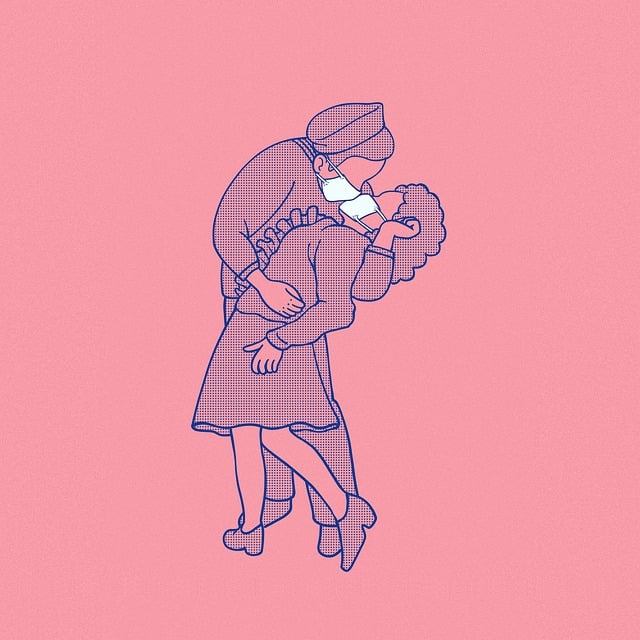Relationship therapy addresses communication breakdowns and trust issues by teaching active listening, empathy, and constructive feedback. This enhances emotional intimacy and strengthens bonds through improved communication skills. Non-verbal cues and body language interpretation are key strategies, fostering deeper connections and resolving conflicts. Techniques like reflective listening, "I" statements, and role-playing improve honesty and understanding in both personal and professional settings. Positive reinforcement and consistent practice build resilience, ultimately transforming relationships into more satisfying and harmonious connections.
Looking to strengthen your connection? Effective communication is key. This guide delves into essential aspects of relationship therapy, providing practical strategies for navigating communication breakdowns and fostering healthier bonds. From active listening techniques and identifying emotional barriers to conflict resolution and non-verbal cues, learn how to express feelings openly and enhance empathy. Discover the power of positive reinforcement and build resilience through consistent practice.
Understanding Communication Breakdown in Relationships

Communication breakdowns are common in relationships and can range from minor misunderstandings to significant conflicts that erode trust and intimacy. In many cases, these breakdowns stem from unmet needs, differing communication styles, or unresolved emotional issues. Relationship therapy offers a safe space for couples to identify these problems and explore alternative ways of expressing themselves and understanding each other.
Through active listening, empathy, and constructive feedback, therapists help partners navigate difficult conversations, improve their ability to communicate effectively, and foster healthier interactions. By addressing the underlying causes of communication breakdowns, relationship therapy enables couples to strengthen their bond, enhance emotional intimacy, and build a more fulfilling connection.
The Role of Active Listening in Relationship Therapy

In relationship therapy, active listening is a powerful tool that significantly enhances communication and fosters deeper connections between individuals. It involves giving your full attention to the speaker, understanding their perspective, and then responding in a way that shows you’ve heard and comprehended their message. This process goes beyond merely hearing the words; it requires engaging with the speaker on an emotional level, asking clarifying questions, and reflecting back what has been said to ensure mutual understanding.
Active listening plays a crucial role in resolving conflicts, building empathy, and strengthening bonds between partners or family members. By practicing this skill, individuals in therapy can improve their ability to communicate openly and honestly, which is essential for navigating the complexities of relationships. It helps create a safe and supportive environment where both parties feel heard, respected, and understood, laying the foundation for positive change and growth.
Identifying Emotional Barriers to Effective Communication

In many cases, emotional barriers significantly hinder effective communication in both personal and professional settings. These obstacles can range from fear of vulnerability to past traumas or unprocessed anger. During communication improvement sessions, particularly in relationship therapy, individuals are encouraged to explore these emotional roadblocks. By learning to recognize and manage their emotions, participants gain a deeper understanding of their own reactions and those of others, fostering more authentic connections.
Effective communication requires not just words but also an awareness of body language, tone, and underlying sentiments. Through guided exercises and reflective practices, relationship therapy helps individuals develop emotional intelligence—the ability to identify, understand, and manage one’s own emotions as well as recognize, interpret, and respond appropriately to the emotions of others. This enhanced emotional awareness is key to overcoming barriers and cultivating more open, honest, and productive conversations.
Strategies for Expressing Feelings and Needs Openly

Effective communication in relationship therapy often hinges on clients’ ability to express their feelings and needs openly. This involves creating a safe, non-judgmental space where individuals feel empowered to share their emotions without fear of rejection or retaliation. Therapists can facilitate this by actively listening, validating experiences, and encouraging honest dialogue. Techniques such as reflective listening—paraphrasing and summarizing what the client has said to ensure understanding—can help individuals feel heard and respected.
Additionally, teaching clients specific communication skills, like using “I” statements (e.g., “I feel hurt when…”) instead of blaming others, can significantly improve expression. Role-playing scenarios in therapy sessions allows individuals to practice these skills in a controlled environment, building confidence in their ability to communicate effectively. Over time, this enhances emotional intimacy and strengthens the bond between partners, fostering more fulfilling relationships.
Non-Verbal Cues: Decoding Body Language in Couples

In relationship therapy, understanding non-verbal cues is a powerful tool for couples seeking to improve their communication. Body language speaks volumes; it can convey emotions, attitudes, and intentions that may not be explicitly expressed verbally. During sessions, therapists often guide partners to become more attuned to these subtle signals. For instance, eye contact can signify interest or vulnerability, while crossed arms might indicate defensiveness or discomfort. Recognizing and interpreting these non-verbal cues allows individuals to respond more empathetically, fostering a deeper connection.
Decoding body language enables couples to navigate conversations with greater sensitivity. It helps them recognize when their partner is truly engaged or if they are closing off. By practicing active listening, partners can mirror each other’s gestures, facial expressions, and posture, creating a sense of unity and understanding. This non-verbal exchange often reveals unspoken desires, fears, or needs, providing valuable insights for relationship therapy and enhancing overall communication dynamics.
Enhancing Empathy: Walking in Each Other's Shoes

Effective communication goes beyond mere words; it involves understanding and connecting with others on a deeper level. One powerful technique often employed in relationship therapy is encouraging individuals to “walk in each other’s shoes.” This metaphorical phrase encapsulates the act of cultivating empathy, which is crucial for building stronger bonds and resolving conflicts. By adopting this perspective, partners or colleagues can gain invaluable insights into the experiences and emotions of one another.
During communication improvement sessions, guiding participants to imagine themselves in their partner’s or team member’s position helps create a more nuanced understanding. It allows them to recognize that everyone has unique perspectives shaped by personal histories, beliefs, and feelings. This practice fosters an environment where active listening becomes more meaningful, leading to enhanced relationships, whether in therapy settings or professional collaborations.
Conflict Resolution Techniques for a Healthier Bond

Conflict resolution techniques are essential tools in relationship therapy, fostering healthier bonds and stronger connections. When couples or colleagues engage in constructive dispute handling, they learn to navigate differences with respect and understanding. This involves active listening, where each party carefully hears and comprehends the other’s perspective, ensuring no misunderstandings or miscommunications arise.
Additionally, techniques like ‘I’ statements encourage individuals to express their feelings without blaming, promoting self-awareness and empathy. Collaborative problem-solving methods enable all involved to work together towards mutually agreeable solutions, enhancing teamwork and personal relationships. These strategies are pivotal in resolving conflicts, strengthening ties, and creating a more harmonious environment for growth and understanding.
Incorporating Positive Reinforcement in Communication

Incorporating positive reinforcement into communication is a powerful strategy often employed in relationship therapy. By focusing on what’s going well and praising efforts, even small improvements, individuals can boost confidence and create a more supportive environment. This approach shifts the dynamic from criticism to encouragement, fostering an atmosphere where open dialogue becomes not only acceptable but encouraged.
In a therapeutic context, this technique helps participants feel validated and understood, encouraging them to engage actively in discussions. Positive reinforcement can be simple—a genuine “Thank you for sharing that” or “I appreciate your perspective”—and it reinforces healthy communication patterns, ultimately enhancing the overall quality of relationships.
Building Resilience Through Consistent Practice

In the realm of communication improvement sessions, particularly within the context of relationship therapy, building resilience is a cornerstone of success. Consistent practice serves as the crucible where individuals refine their listening skills, learn to manage emotions, and develop strategies for constructive conflict resolution. Through regular engagement in these exercises, couples or individuals cultivate a robust emotional ecosystem, better equipped to navigate challenges and complexities that arise in any relationship.
The tapestry of effective communication is woven with threads of patience, empathy, and mutual understanding. By consistently practicing open dialogue, active listening, and non-violent communication techniques, participants in therapy sessions foster an environment where vulnerability becomes a strength. This process not only strengthens the bond between partners but also equips them with tools to enhance their overall well-being and relationship satisfaction.
